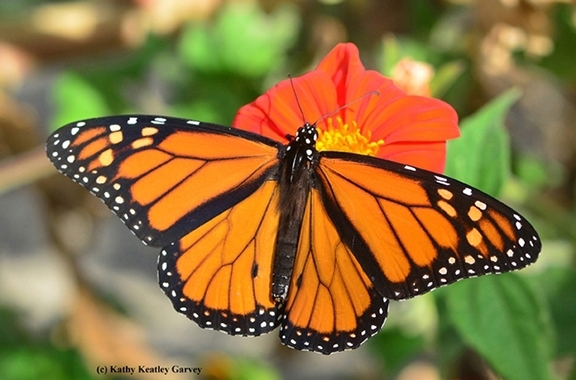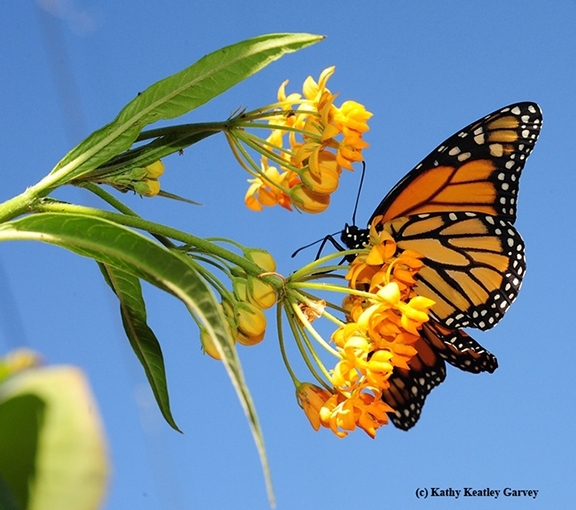- Author: Kathy Keatley Garvey
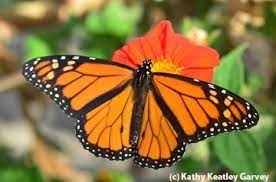
Entomologist and monarch scientist David James of Washington State University posted this yesterday on his Facebook page, Monarch Butterflies in the Pacific Northwest:
"Insect populations are well known for large annual fluctuations in size. However, rarely do these fluctuations occur on the scale currently being seen in western monarchs. From less than 2,000 monarchs counted in 2020, we currently have more than an estimated 200,000 at the overwintering sites! A 100-fold increase! This is staggering! However, it is less of a surprise to me than many others. In March 2021, I published a commentary paper titled Western North American Monarchs: Spiraling into Oblivion or Adapting to a Changing Environment? (Animal Migration journal). I suggested the latter was the case and stated: ‘the adaptability of the monarch butterfly will allow it to persist in a changed environment'. I based this on more than 40 years study of monarch populations, particularly research I did, published in peer-reviewed journals, that showed monarchs in Australia (they arrived in 1870 by island-hopping across the Pacific) had adapted physiologically to Australian conditions. I think we are seeing this monarch ‘power' now. They are trying different things in terms of life strategies and inevitably there will be failures and successes. This is how insects adapt and evolve. We will see more ups and downs in the future, but I have seen how adaptive and resilient the monarch is. This isn't to say we shouldn't help the monarch. We should and we are, primarily by creating habitat and reducing pesticide use. We can work with the adaptable and resilient monarch and ultimately turn 200,000 into 2,000,000!"
Mona Miller, who administers the popular Facebook page, Creating Habitat For Butterflies, Moths, & Pollinators, responded to the WSU post: "Monarch are resilient insects, they have so many strategies to increase their population, but they do have their limits. We must stop pulling out tropical milkweed and cutting it back. Washing off all milkweed should suffice to clean off the OE spores. I emailed several scientists, no one could tell me that OE (Ophryocystis elektroscirrha is a protozoan parasite) has any way to attach to milkweed leaves other than getting caught in the hairs. Tropical milkweed has smooth leaves. Tropical milkweed has been in California since 1909, that is over 100 years. Totally eradicating tropical milkweed just like totally eradicating all the eucalyptus trees would have a detrimental effect on the Monarch population, perhaps it already has." (Note: both eucalyptus trees and tropical milkweed are non-natives.)
"Do plant native milkweeds and nectar sources," she advocates. "If you don't have land, plant these plants in containers. Any habitat is critical to help feed the pollinators including Monarch butterflies."
In response to a post that "Tropical milkweed and eucalyptus trees are not native to Ca regardless of how long they have been here," Miller pointed out: "There are many plants growing in California that are not native to California. The fact is that the Monarch butterflies are using both of these plants. If these plants are immediately eradicated it would be compromising shelter, nectar, and host plants for the Monarch butterfly. During the winter both are blooming and provide nectar. Cutting back tropical milkweed when it has caterpillars in the winter should not be done. How is the Monarch butterfly going to evolve to adapt to the weather without tropical milkweed? Like I said, just wash off all milkweeds to clean off the OE. Due to changes in weather, there are also some native milkweeds that are not dying back in the winter. We can help the Monarch butterflies adapt or we can pull the rug out from under them by continuing to eradicate the plants that they need for winter survival."
Another point: Monarchs aren't native, either. Read Lincoln Brower's "Understanding and Misunderstanding the Migration of the Monarch Butterfly (Nymphalidae) in North America: 1857-1995" (Journal of the Lepidopterists' Society 49(4), 1995,304-385.) It begins: "Since 1857, amateurs and professionals have woven a rich tapestry of biological information about the monarch butterfly's migration in North America. Huge fall migrations were first noted in the midwestern states, and then eastward to the Atlantic coast. Plowing of the prairies together with clearing of the eastern forests promoted the growth of the milkweed, Asclepias syriaca, and probably extended the center of breeding from the prairie states into the Great Lakes region. Discovery of overwintering sites along the California coast in 1881 and the failure to find consistent overwintering areas in the east confused everyone for nearly a century. Where did the millions of monarchs migrating southward east of the Rocky Mountains spend the winter before their spring remigration back in to the eastern United States and southern Canada? Through most of the 20th century, the Gulf coast was assumed to be the wintering area, but recent studies rule this out because adults lack sufficient freezing resistance to survive the recurrent severe frosts."
Art Shapiro, UC Davis distinguished professor of evolution and ecology who maintains a research website at http://butterfly.ucdavis.edu/, weighed in on the issue today in an email about the monarch population increase: "We do not know where they are coming from. This merely goes to show (1) how spotty our coverage is. (2) how little we understand about life-history plasticity in this species. (3) that most of the received wisdom about the decline and its causes is bunk."
Shapiro has monitored butterfly population trends on a transect across central California since 1972. The 10 sites stretch from the Sacramento River Delta through the Sacramento Valley and Sierra Nevada mountains to the high desert of the Western Great Basin. The largest and oldest database in North America, it was recently cited by British conservation biologist Chris Thomas in a worldwide study of insect biomass.
We remember when Shapiro observed an way-early monarch in Sacramento on Jan. 29, 2020. Later in the afternoon, he heard monarch scientist Elizabeth Crone, professor of Tufts University, present a UC Davis Department of Entomology and Nematology seminar on the decline of Western monarchs.
In her seminar, Crone expressed concern about the lack of scientific knowledge about monarchs, especially when they emerge from their overwintering sites along coastal California, usually around February, and head inland. Said Crone: "We don't know what they're doing between February and when milkweeds break ground later in spring."
There is so much we do not know about monarchs...
UC Davis-affiliated resource, published Nov. 17, 2020 in Proceedings of the National Academy of Sciences (PNAS):
"Two Centuries of Monarch Butterfly Collections Reveal Contrasting Effects of Range Expansion and Migration Loss"
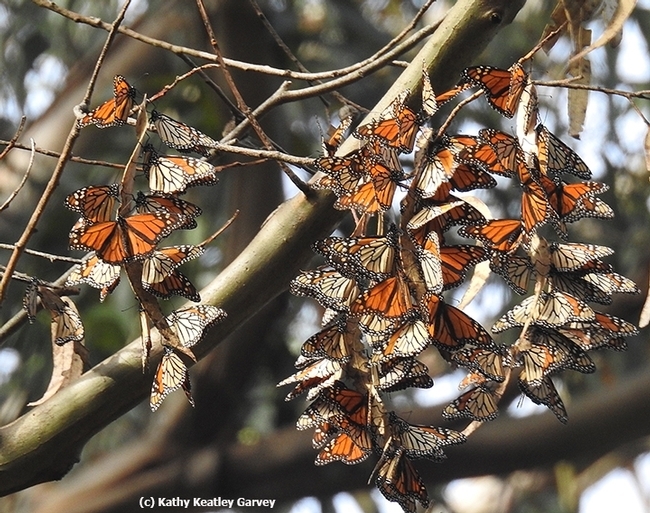
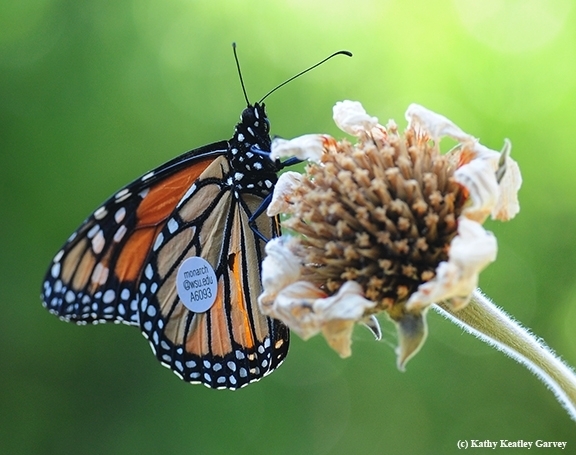
- Author: Kathy Keatley Garvey
Let the count begin!
Researchers and volunteers in a three-week project headed by the Xerces Society for Invertebrate Conservation are now counting the Western monarch population at overwintering sites along the California coast.
It all began Saturday. An unofficial count estimates more than 50,000 monarchs are there. That's a huge increase from the fewer than 2000 tally last winter.
An Associated Press story this week indicated that the monarch population is "bouncing back."
Maybe "fluttering back?"
Since the 1980s, the Western monarch population, has declined by more than 99 percent, according to Xerces. That led butterfly expert Art Shapiro, UC Davis distinguished professor of evolution and ecology who has monitored butterfly populations in Central California since 1972, to declare that the Western monarchs are on "life support."
Scientists blame the decline on habitat loss, pesticides and climate change.
How many overwintering sites are there along the California coast? About 100. "One of the best-known wintering places is the Monarch Grove Sanctuary, a city-owned site in the coastal city of Pacific Grove, where last year no monarch butterflies showed up," the Associated Press reported.
"This year a preliminary count showed more than 13,000 monarchs have arrived at the site in Monterey County, clustering together on pine, cypress and eucalyptus trees and sparking hope among the grove's volunteers and visitors that the struggling insects can bounce back."
Monarch scientist David James, a Washington State University entomologist, recently presented a webinar on "Western Monarchs: Migration, Adaptation, Controversies and the Future" for the South West Monarch Study group.
"It was well-received but we had technical problems towards the end," he related on his Facebook page, Monarch Butterflies in the Pacific Northwest. "Gail Morris kindly allowed me to re-record it and you can now find it at the link below. My view of the future of western monarchs is more optimistic than some other monarch researchers. Much of this is based on my research on monarch physiology and ecology conducted 40+ years ago in Sydney, Australia, which showed monarchs well able to adapt to a different environment. I think we are seeing this now in the western US in real time! My thoughts on this are contained within the webinar. The recovery in population numbers at overwintering sites this fall, is not surprising to me but I am surprised at some of the large numbers coming in from various sites. I will take a look at some of the sites over the next few days and will report back here."
See James' presentation on YouTube at https://www.youtube.com/watch?v=g-hh5c8mw6o.
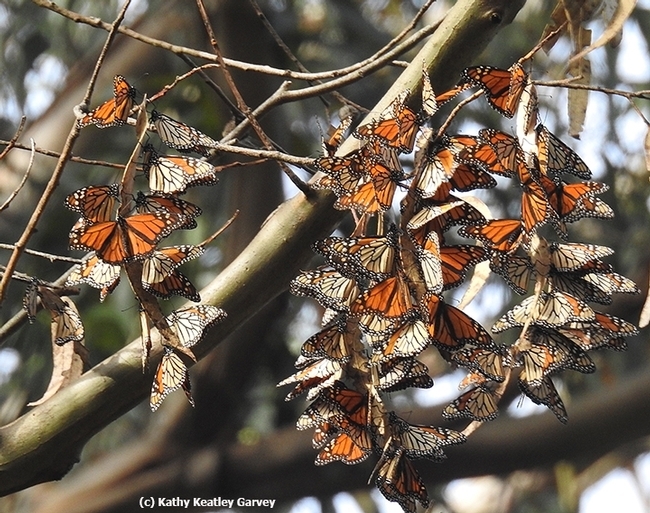
- Author: Kathy Keatley Garvey
Yes, monarch butterflies qualify for the Endangered Species list.
But no, we can't protect them because we don't have the money.
That's the gist of what the U.S. Fish and Wildlife Service (USFWS) said today.
USFWS director Aurelia Skipwith announced in a news release: "We conducted an intensive, thorough review using a rigorous, transparent science-based process and found that the monarch meets listing criteria under the Endangered Species Act. However, before we can propose listing, we must focus resources on our higher-priority listing actions. As part of the decision, monarchs' status will be reviewed each year by the agency and conservation efforts will continue."
The monarch population is declining at an alarming rate--both the Western population, which overwinters along the California coast, and the Eastern population, which overwinters in central Mexico. Since the 1990s, monarchs have declined by approximately 80 percent in central Mexico, and by 99 percent in coastal California, scientists say. The threats impacting the monarchs? "Habitat loss and fragmentation has occurred throughout the monarch's range. Pesticide use can destroy the milkweed monarchs need to survive," USFWS says. "A changing climate has intensified weather events which may impact monarch populations."
Butterfly guru Art Shapiro, UC Davis distinguished professor of evolution and ecology, says monarchs are on "life support." (See Bug Squad blog.)
Will there be a time when we no longer see the iconic monarchs fluttering into our yards, laying eggs on our milkweed and sipping nectar from our plants? Will they go extinct like the Xerces blue butterfly, Glaucopsyche xerces, last seen in the early 1940s in the San Francisco Bay area?
What can we do to protect the monarchs from extinction?
We can all do our part by planting milkweed, nectar-rich flowers (especially important during their migration) and avoiding all pesticides. We can also get involved with organizations such as the Xerces Society for Invertebrate Conservation, which monitors the monarch populations and offers advice and suggestions. See https://xerces.org/monarchs.
As Xerces points out: "The Xerces Society, government agencies, partner organizations, and communities are working across the U.S. to protect and restore habitat for monarch butterflies across a broad array of landscapes, provide workshops and educational resources on monarch conservation, and conduct research—including facilitating community science projects like the Western Monarch Thanksgiving Count and the Western Monarch Milkweed Mapper."
When the monarchs overwinter, they cluster to keep warm. Is it too much to ask that we humans cluster together throughout the country to protect them from extinction?
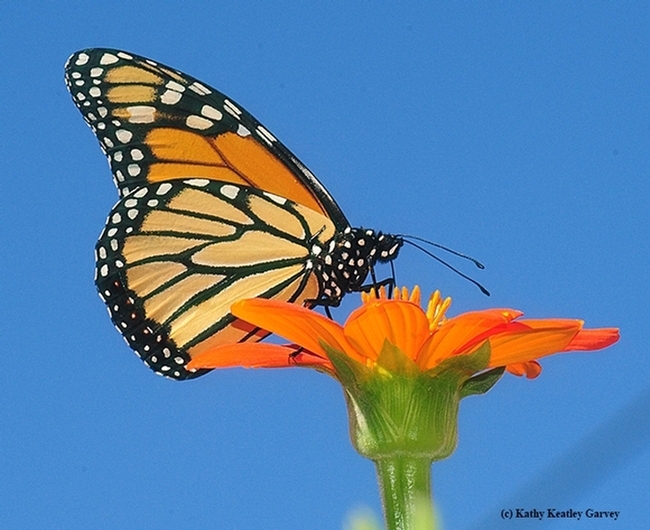
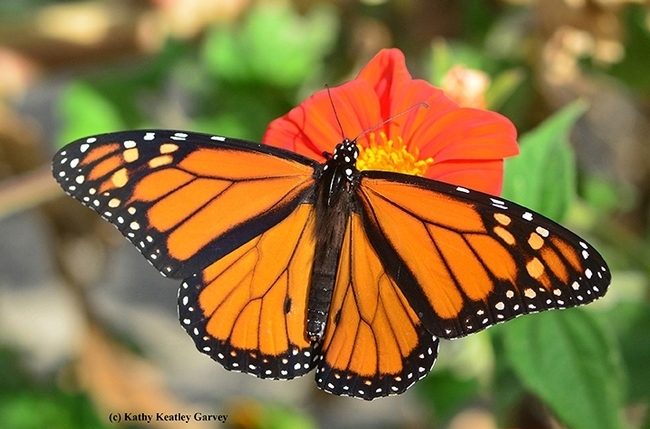
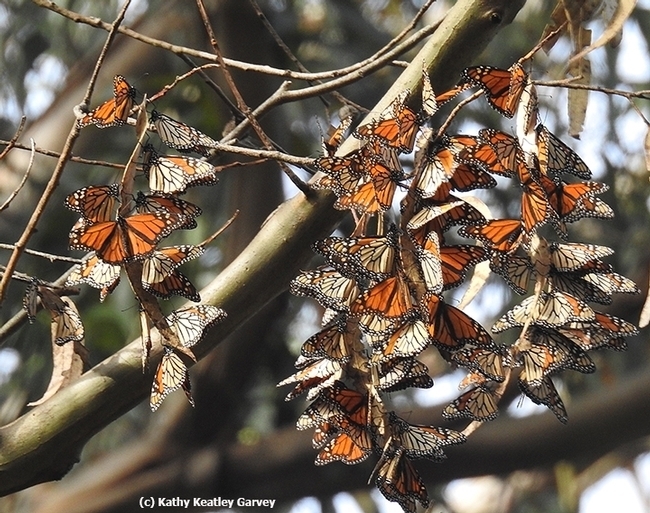
- Author: Kathy Keatley Garvey
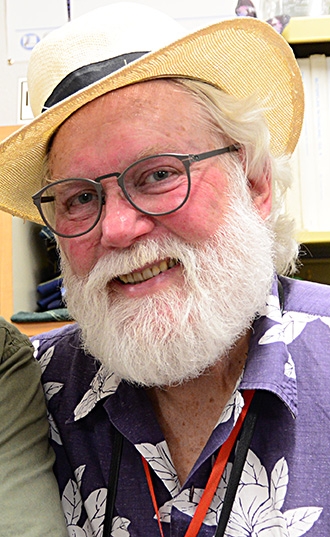
Well, sort of "on screen." A newly released movie features him and his work.
The Dark Divide chronicles his 1995 journey across one of America's largest undeveloped wildlands, the Gifford Pinchot National Forest. Actor David Cross portrays him.
The plot: "At the urging of his dying wife Thea (Debra Messing), the shy author finds himself in over his head on an epic, life-changing expedition through Washington's Gifford Pinchot National Forest in search of new species of butterflies. Over the course of his six-week adventure, Pyle battles self-doubt, the grueling trail, and the people and creatures who call this forest home. And, somewhere deep in the heart of The Dark Divide, he makes a discovery that challenges everything he knows about the natural world."
You'll have to watch it to see the discovery "that challenges everything."
Pyle, who founded the Xerces Society in 1971, resides in the Columbia River-tributary town of Grays River in southwest Washington.
He draws crowds and questions wherever he goes.
We remember when he toured the Bohart Museum of Entomology, University of California, Davis, in July 2019 with fellow members of the Lepidopterists' Society at their 68th annual meeting.
At the time, Pyle had authored 23 publications, including the comprehensive National Audubon Society Field Guide to North American Butterflies, a go-to reference source. Among his other insect-related books: Chasing Monarchs: Migrating with the Butterflies of Passage, which chronicles his 9,000-mile journey to discover the secrets of the monarchs' annual migration. For his book, Mariposa Road: The First Butterfly Big Year, Pyle sought to track, firsthand, the 800 species of butterflies known in the United States. The book is a result of his 88,000 mile journey.
While touring the Bohart Museum, "Bob," as he prefers to be called, took a special interest in the Magdalena alpine butterfly, an all-black alpine butterfly, considered "the most elusive of several rare and beautiful species found on the mountain." He featured the butterfly in his book: Magdalena Mountain: A Novel.
Pyle visited with many of the Bohart crew, including director Lynn Kimsey, UC Davis professor of entomology; senior scientist Steve Heydon; Jeff Smith, curator of the Lepidoptera collection; and Bohart associate and naturalist Greg Kareofelas.
The Bohart Museum houses nearly eight million specimens, including the California State Insect Survey, as well as a live "petting zoo" (Madagascar hissing cockroaches, walking sticks and tarantulas) and a gift shop. It's located in Room 1124 of the Academic Surge Building on Crocker Lane, UC Davis campus, but is temporarily closed due to COVID-19 precautions. More information is available on the website or by contacting bmuseum@ucdavis.edu or (530) 753-0493.)
(Note: The Dark Divide is showing in some theaters and can be streamed online. Xerces Society supporters can save $5 off the streaming rental. Go to The Dark Divide website, select "Virtual Cinema" and then click on the Xerces Society logo. When you reach the checkout, enter XSDD5 for the $5 discount. )


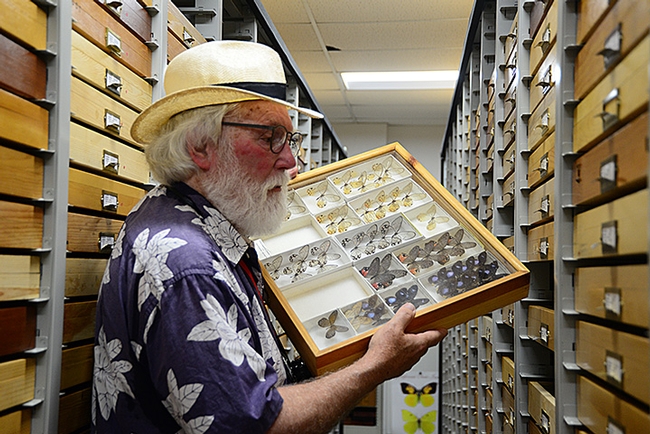
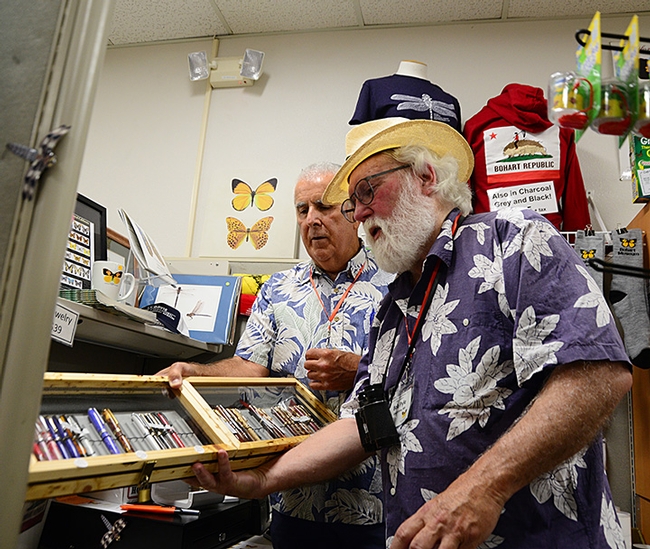
- Author: Kathy Keatley Garvey

The Xerces Society for Invertebrate Conservation reported this week that its Western Monarch Thanksgiving Count shows a decline for the second consecutive year. “Sadly, fewer than 30,000 monarchs were counted—29,418 to be exact—for the second year in a row, so the western monarch population remains at a critical level,” according to Matthew Shepherd, director of communications and outreach. (See Xerces press release and blog about the population count for this winter.)
Researcher Elizabeth Crone, a professor at Tufts University, Medford, Ma., will shed some light on the issue when she delivers a UC Davis Department of Entomology and Nematology seminar on "Why Are the Monarch Butterflies Declining in the West?" from 4:10 to 5 p.m., Wednesday, Jan. 29 in 122 Briggs Hall, off Kleiber Hall Drive, UC Davis campus. Her longtime collaborator, pollination ecologist and professor Neal Williams, will introduce her.
"Ecologists now face the dual challenge of documenting changes in the environment, and figuring out appropriate strategies for conserving and recovering natural resources in changing environments," says Crone, who is completing a research sabbatical at UC Davis. In her talk, she will focus on “using the tools of population ecology to address both sides of this challenge: quantifying changes in the abundance of western monarch butterflies (and factors associated with these changes), and using theory and data to design strategies and targets for restoration and recovery.”
“Analyses of past dynamics (1980-2017) showed that western monarch butterflies have declined more quickly than their eastern counterparts, and that these declines were most strongly associated with loss of overwintering habitat, and more weakly (but significantly) associated with increased pesticide use and warmer breeding season temperatures,” Crone writes in her abstract. “Analyses of current conditions (2018-2019) suggest that a recent dramatic drop in abundance occurred in spring, between when monarch butterflies leave coastal overwintering sites and arrive in the Central Valley and Sierra Foothills.”
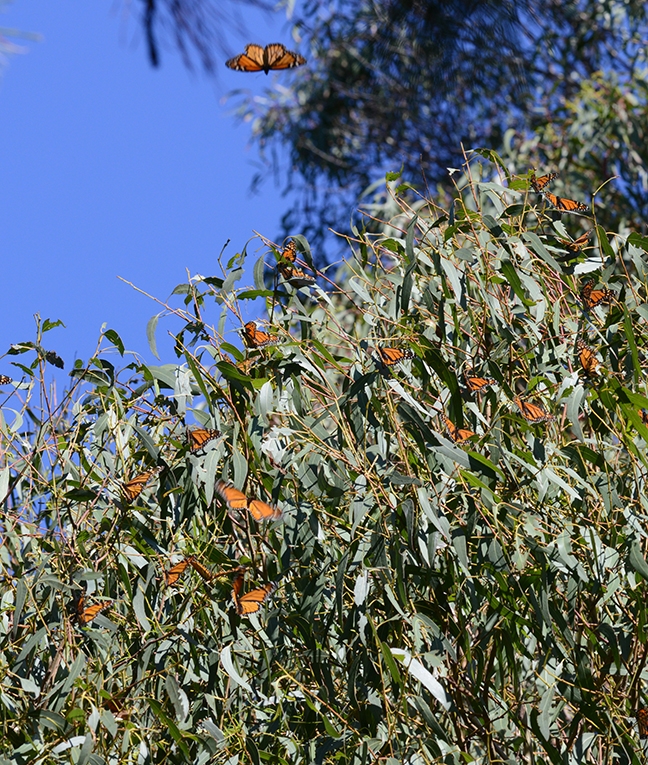
The Xerces Society for Invertebrate Conservation reported this week that its Western Monarch Thanksgiving Count shows a decline for the second consecutive year. “Sadly, fewer than 30,000 monarchs were counted—29,418 to be exact—for the second year in a row, so the western monarch population remains at a critical level,” according to Matthew Shepherd, director of communications and outreach. (See press release and a blog article about the population count for this winter.)
A native of Alexandria, Va., Crone received her bachelor's degree in biology, summa cum laude, from the College of William and Mary, Williamsburg, Va., in 1991, and her doctorate in botany from Duke University in 1995. She served as a postdoctoral researcher at the University of Washington, Seattle, from 1996-1997. Her career encompasses academic appointments at Harvard University, University of Montana, and the University of Calgary.
No stranger to UC Davis, Crone has collaborated with Neal Williams "on and off" for the past 20 years. “We had a National Science Foundation grant to study bumble bee populations from 2014-2019, so I have been visiting regularly since he got here. Starting in winter 2019, I have also had funding to take partial research leave from Tufts and work on western monarchs. I have been about half-time at Tufts and half-time at UC Davis." "I am grateful to Neal and the Entomology Department for hosting me during this extended stay!" she added.
Crone is a co-principal investigator (PI) with PI Cheryl Schultz, associate professor of biological sciences at Washington State University and co-PI Sarina Jepson, endangered species program director, Xerces Society, on a federal grant, "Western Monarch Breeding Phenology" (awarded May 2017-June 2020, with the potential for annual renewal). The grant was funded through the Department of Defense's (DoD) Natural Resources Program, DoD Legacy Program.
Of her research, Crone says "My research focuses on population ecology, especially of plants and insects, and plant-animal interactions. Specifically, I am interested in how environmental changes translate to changes in population dynamics: For example, is there a simple, linear matching of changes in resources to abundance of consumers, or do interactions among individuals and species moderate these responses? Much of my research also involves developing novel quantitative approaches to predict long-term dynamics from small scale observations and experiments. Current projects include studies of butterflies, bees, perennial wildflowers, sugar maples, and acorn-granivore interactions. Past projects include some of the best documented examples of cyclical dynamics in plant populations and spatial metapopulation dynamics in animal populations. I was also one of the first ecologists to adapt generalized linear mixed models to estimate variance terms for stochastic population models."
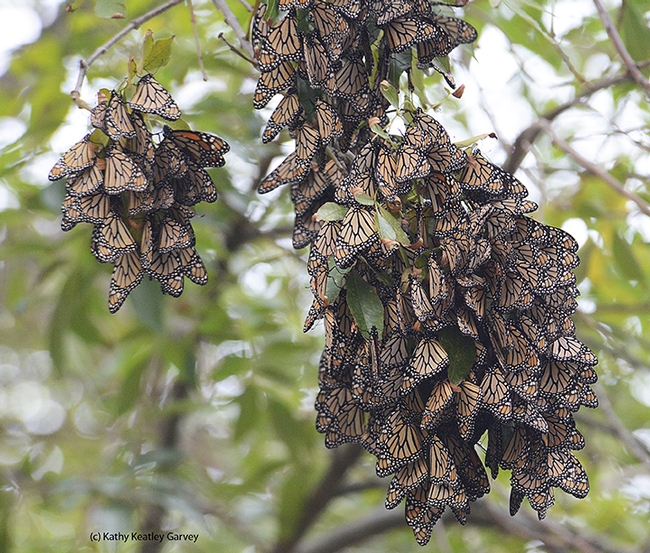
Her honors and awards are many and varied:
- Project of the Year Award, SERDP (Strategic Environmental Research and Development Program) 2018
- Foreign Member, Finnish Academy of Science and Letters (elected 2017)
- Vice Chair / Chair, Theoretical Ecology Section, Ecological Society of America, 2010-2012
- Ecological Research Award, Ecological Society of Japan, 2014
- Fulbright Fellowship, 2007-2008
- National Science Foundation (NSF) Postdoctoral Fellowship in Biosciences Related to the Environment (1996-1997)
- U.S. Department of Energy Graduate Fellowship for Global Change (1991-1995)
- Baldwin Speece Award (College of William and Mary, for scholarship/service in ecology, 1991)
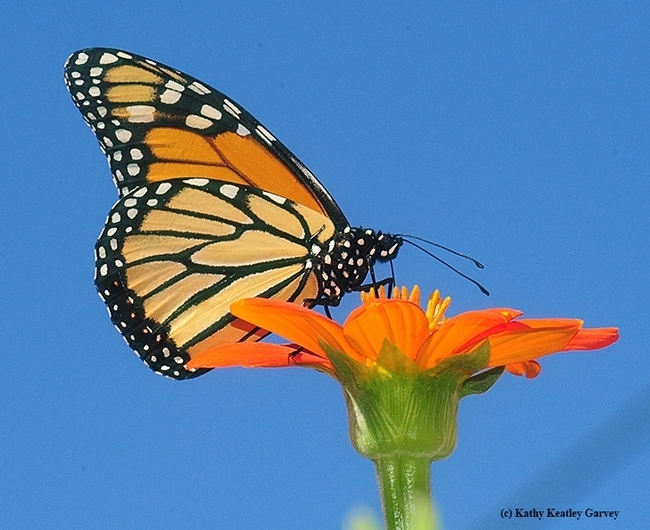
How did you get interested in science? Was there an "ah ha" moment?
I was in an REU (Research Experiences for Undergraduates) program studying plant-insect interactions in 1990. The thing that made me want to go to grad school was the fun puzzle of designing an experiment AND figuring out how to interpret the data - I had collected data on beetle feeding rates, and when I didn't know how to analyze them my advisor said "read a statistics book" ... so I did--since then I have always especially loved the puzzle of matching models to data.
From an earlier age, I have always enjoyed being outdoors, which is probably why I chose to study biology. But that was the moment when I knew I would enjoy a life of research.
Some of your major accomplishments?
From an applied ecology perspective, the biggest is helping the Fender's blue butterfly move from being listed as endangered to nearly ready for down-listing. From a basic ecology perspective, I figured out the ecological interpretation of variance terms in mixed models as estimates of spatial heterogeneity and environmental stochasticity, and worked out one of the best examples of how mast-seeding species are synchronized by their pollinators.
What fascinates you about monarchs?
The possibility that we can recover the western monarch population from its recent steep decline to being abundant again. This should be a problem we can fix.
What do you like best about science?
The puzzle of matching models to data and the possibility of saving species from extinction.
Any scientists in the family?
My sister is an astronomer. My dad was a math professor. Before him, though, no one in the extended family had even gone to college.
What do you do in your leisure time?
I once gut-renovated a house (with help from carpenters, but doing some of the work myself), I am very proud of my urban pollinator garden in Somerville (near Boston, Mass., and I am a good enough trombonist to (just barely) keep up with my trombonist friends.
Future plans?
I am waiting to find out whether our monarch funding will be extended or whether I will go back to a regular teaching schedule at Tufts. Even if I go back to "full-time" teaching, I am sure I will be doing western monarch and bumble bee research for the indefinite future, and will continue to be at least partly bicoastal.
(Editor's Note: the Xerces Society's site-by-site monarch count data is available at https://www.westernmonarchcount.org/data/. This covers all years since the first count in 1997.)
